One of the best things we did in Bansko was join a photography tour of abandoned buildings in town, organized through Bansko's digital nomad WhatsApp group. It's premise was simple and immediate: walk among abandoned buildings around Bansko, climb a few floors, and capture the play of light across raw concrete and broken windows. The afternoon began just beyond the gondola lift, near the Regnum Hotel, in a zone that’s both part of the town and utterly apart from it.
In that chunk of outer Bansko, skeletons stand: half-finished hotels and apartment blocks, all Soviet‑style slabs in concrete, their rebar projecting like skeletal limbs. These structures were never completed—not for lack of will alone, but because the tourist boom that once promised so much collapsed. The financial crisis of 2007 burst the speculative bubble, and now many buildings remain frozen, their stories half-built, their interiors still waiting for floors or walls that never came.
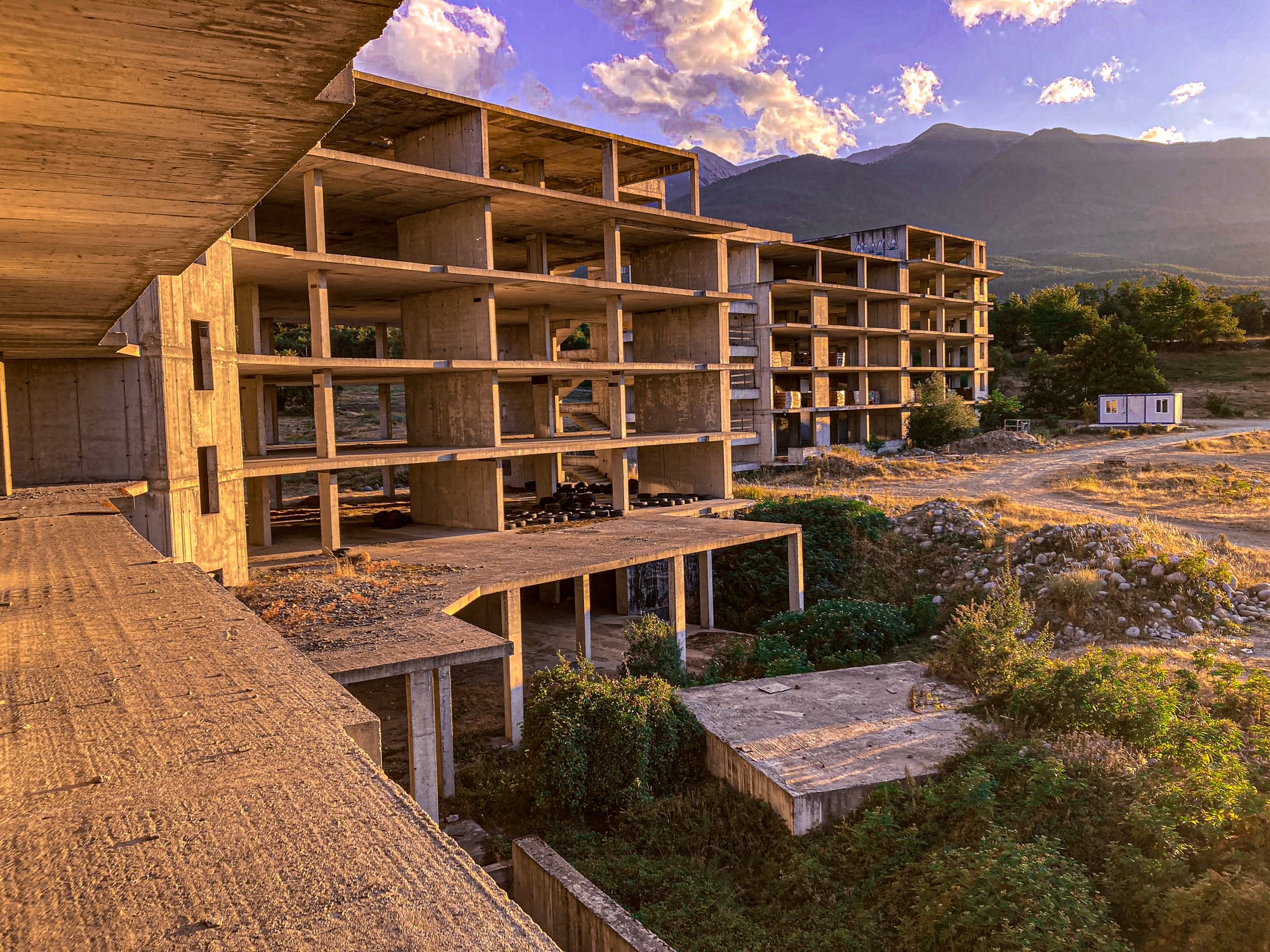
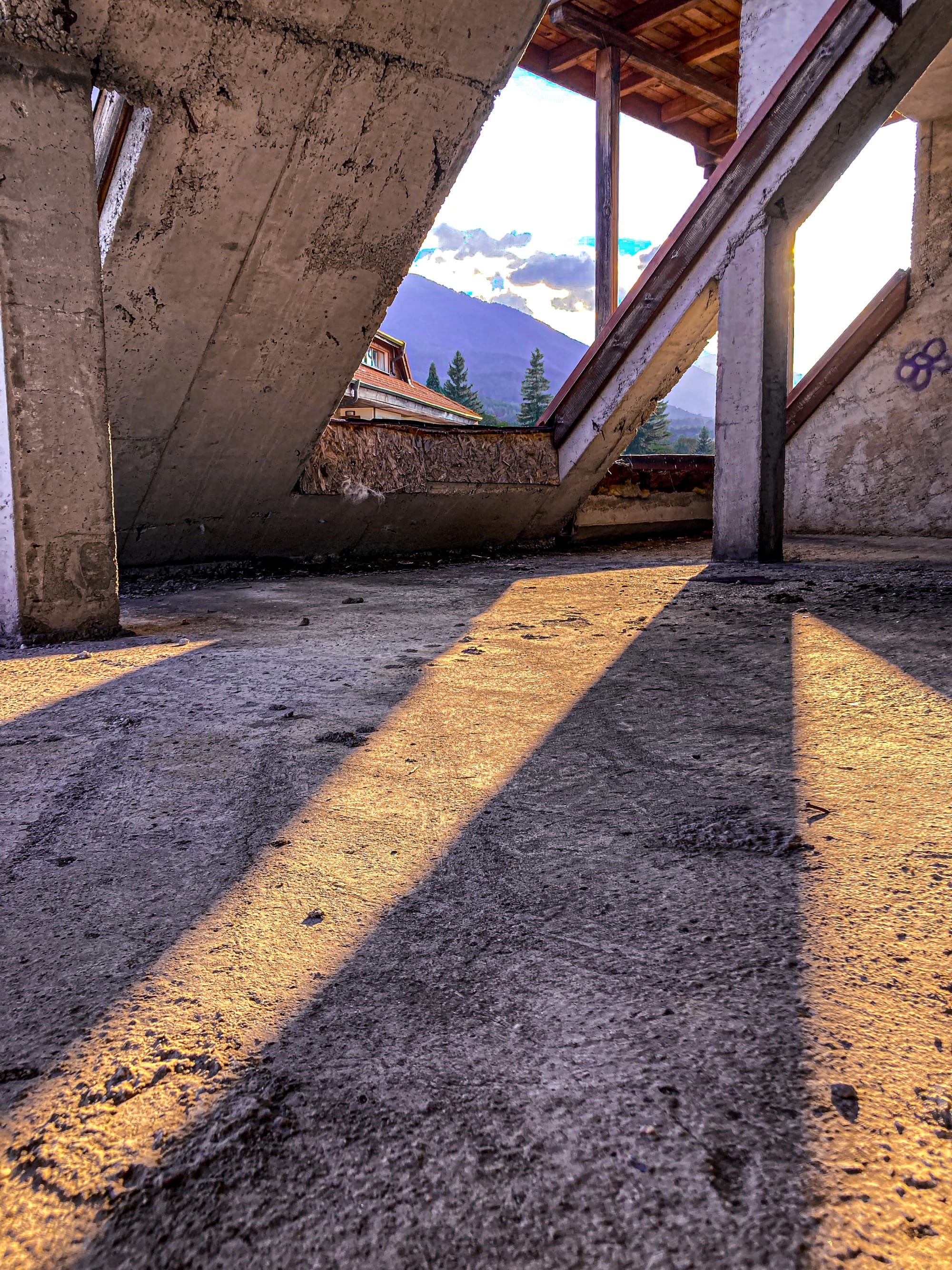
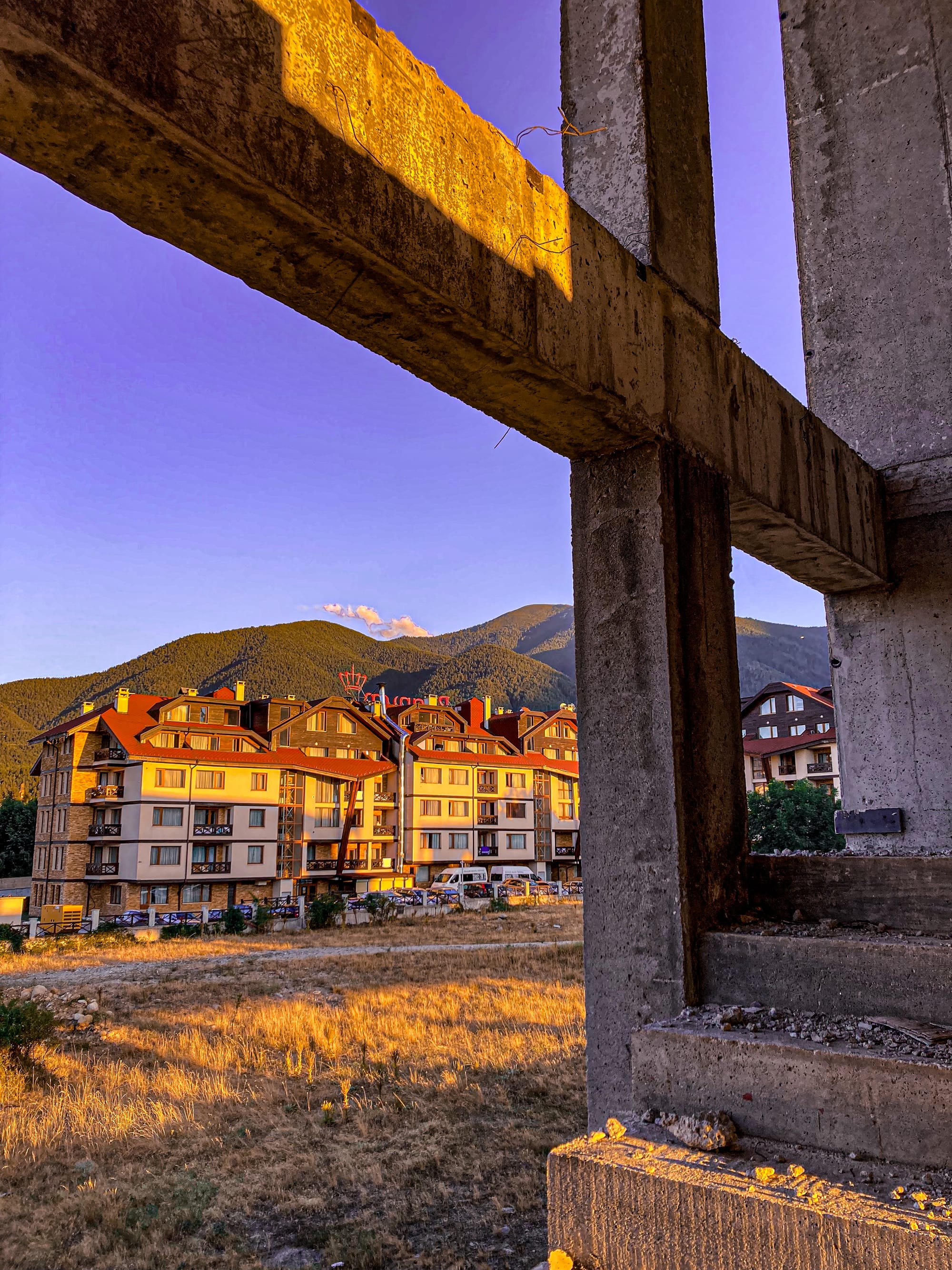
Evening light cutting through the concrete frames of Bansko’s abandoned buildings, with views of finished apartments beyond
We climbed one of them. The wooden steps groaned; dust everywhere. When we reached the top, we stood in a raw frame with sky visible through gaped holes in the ceiling.
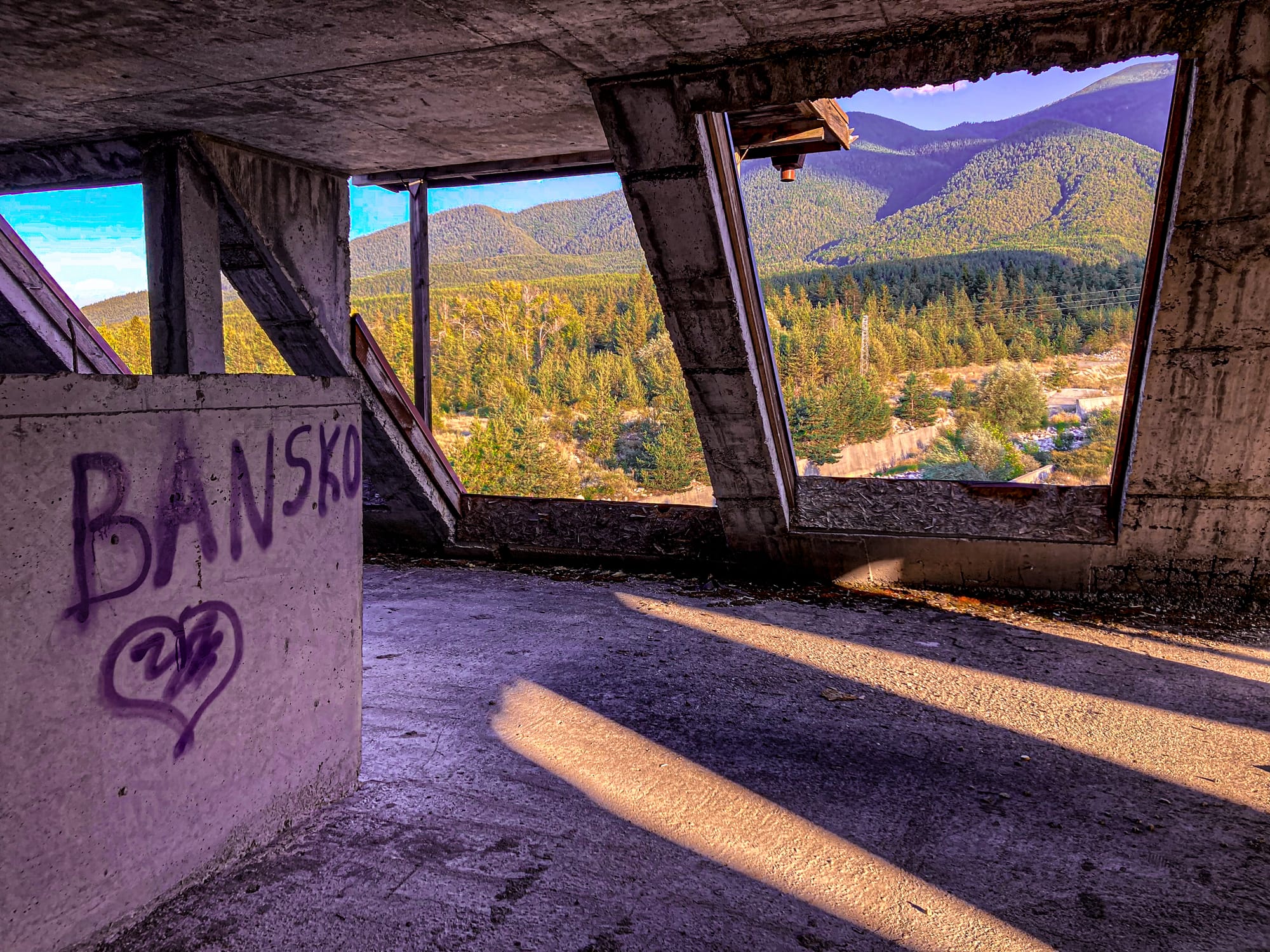
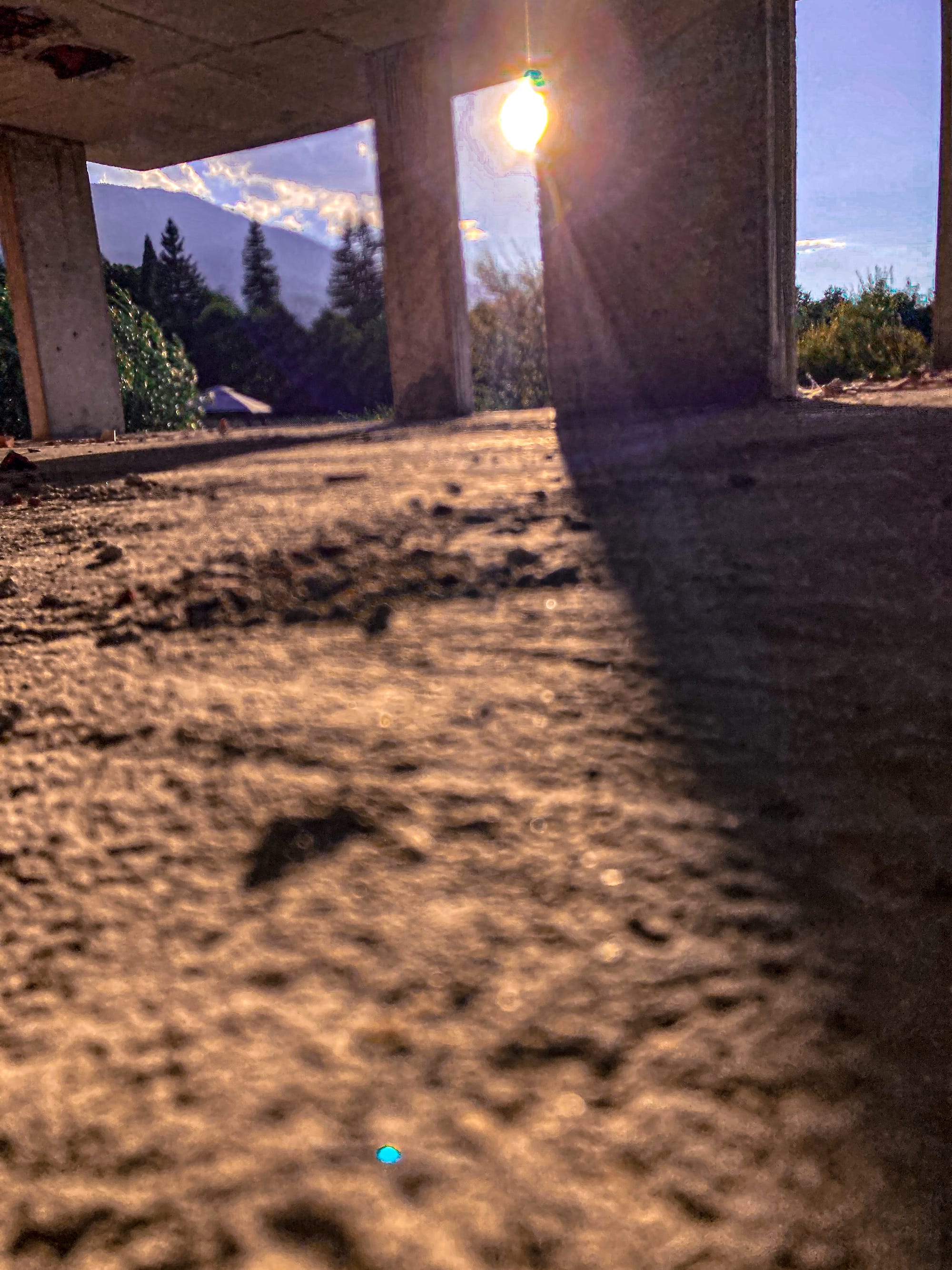
Inside Bansko’s abandoned buildings, where graffiti, slanted concrete frames, and evening light shape the mountains
Beneath us, the new town sprawled, Pirin’s peaks defined in slashes of light. The architecture—the empty corridors, the giant, dark windows folding into the sky—felt unreal.
Why Bansko has these ghost-like buildings
These derelict structures have become part of Bansko’s landscape—a visible reminder of overreach and halted dreams. The early 2000s brought a surge of optimism to the region as Bulgaria joined the European Union and investors saw potential in transforming Bansko into a winter resort to rival the Alps. Hotels and apartment complexes began rising at a rapid pace. For a while, it looked as if Bansko might reinvent itself completely. But when the financial crisis of 2007 and 2008 hit, the speculative bubble collapsed. Funding dried up, buyers disappeared, and many of the projects stalled midway. Some of the buildings were left unfinished because of bankrupt developers; others became entangled in legal disputes that froze them in time. Ownership was contested, debts mounted, and the structures slipped into limbo.
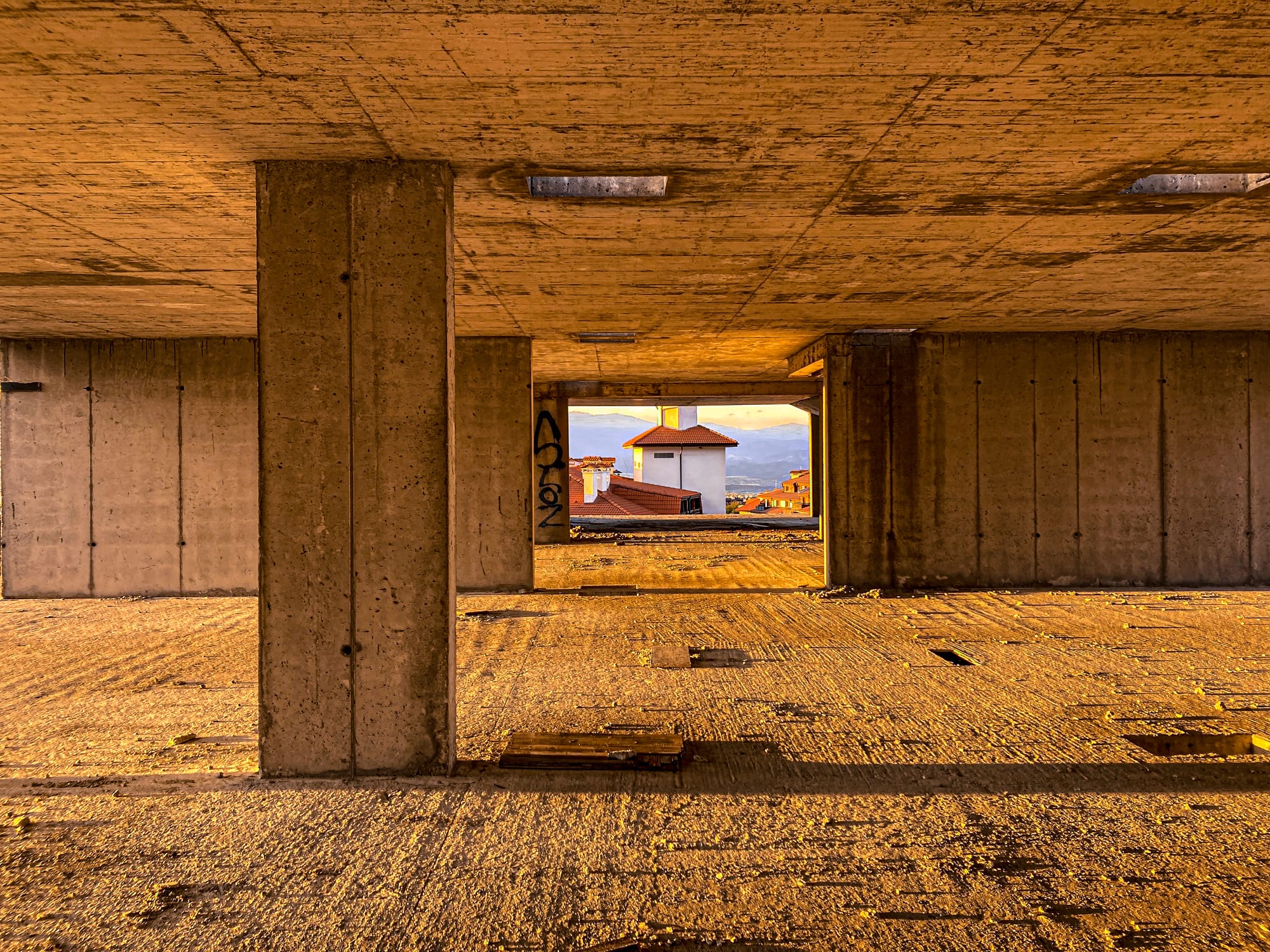
Environmental pressure added to the paralysis. Bansko lies on the edge of Pirin National Park, a UNESCO heritage site, and the rush of construction triggered alarm about overdevelopment and ecological damage. New building permits slowed or halted entirely, and with them the possibility of completing what was already underway. Some properties were officially “arrested” by the authorities, preventing them from being sold, finished, or even demolished. The result is what you see today: empty shells of buildings standing alongside new hotels and guesthouses, silent reminders of unchecked ambition.
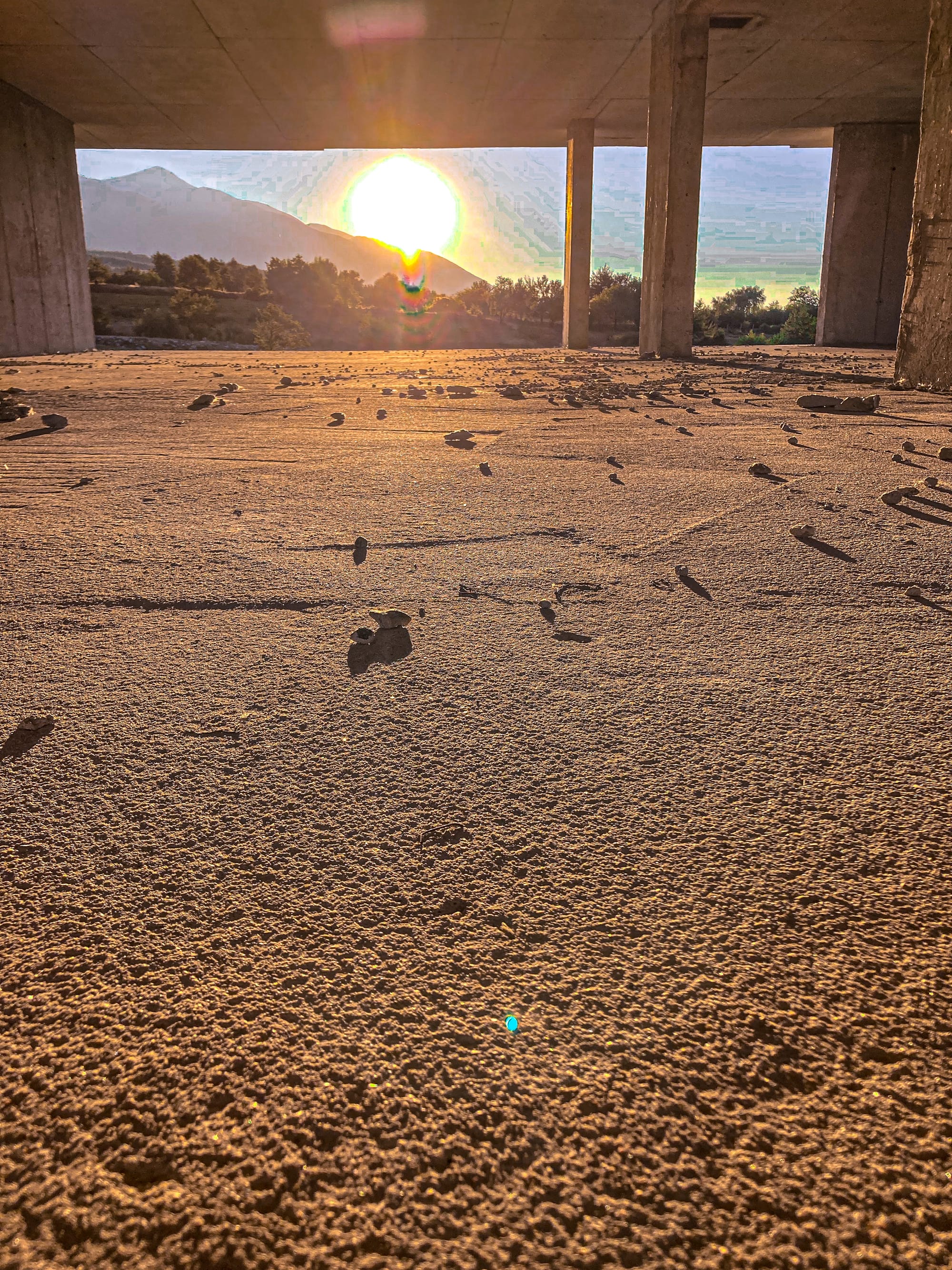
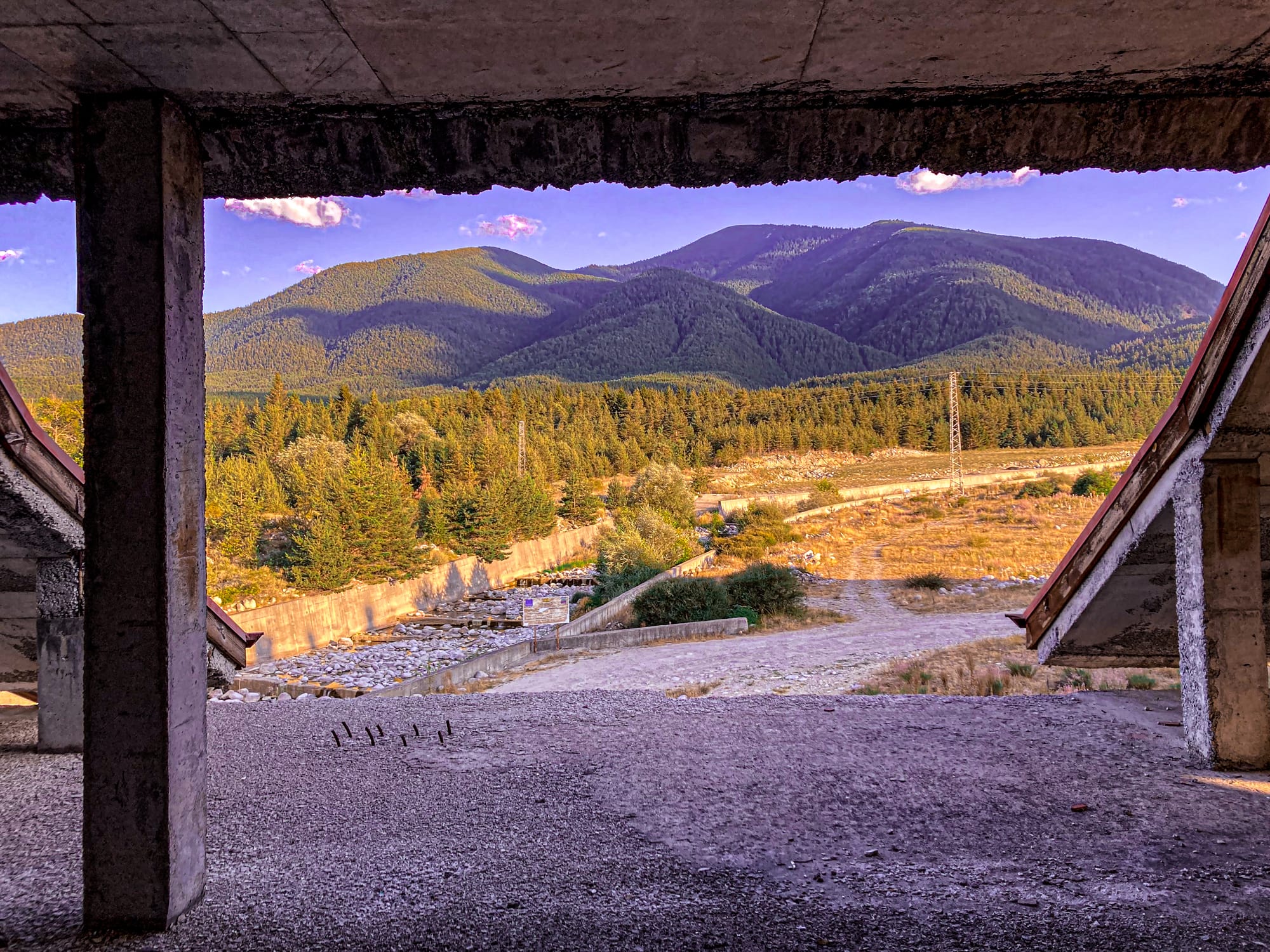
Sunset and mountain views framed through the empty shells of Bansko’s unfinished buildings
These skeletons are not just failures from the financial collapse—they are part of an emotional and visual legacy. They remind us of how quickly optimism can turn fragile and how visions of prosperity can be arrested mid-gesture, leaving behind frames that speak to futures that never came to pass.
Art emerging from emptiness
Later in the walk, we moved to another block and found that the silence of the concrete had been interrupted by color. Half-finished graffiti and murals stretched across the walls, some fading and some fresh. A face appeared where no windows had been fitted, a swirling plant climbed across an unfinished corridor, abstract shapes broke up the monotony of grey.
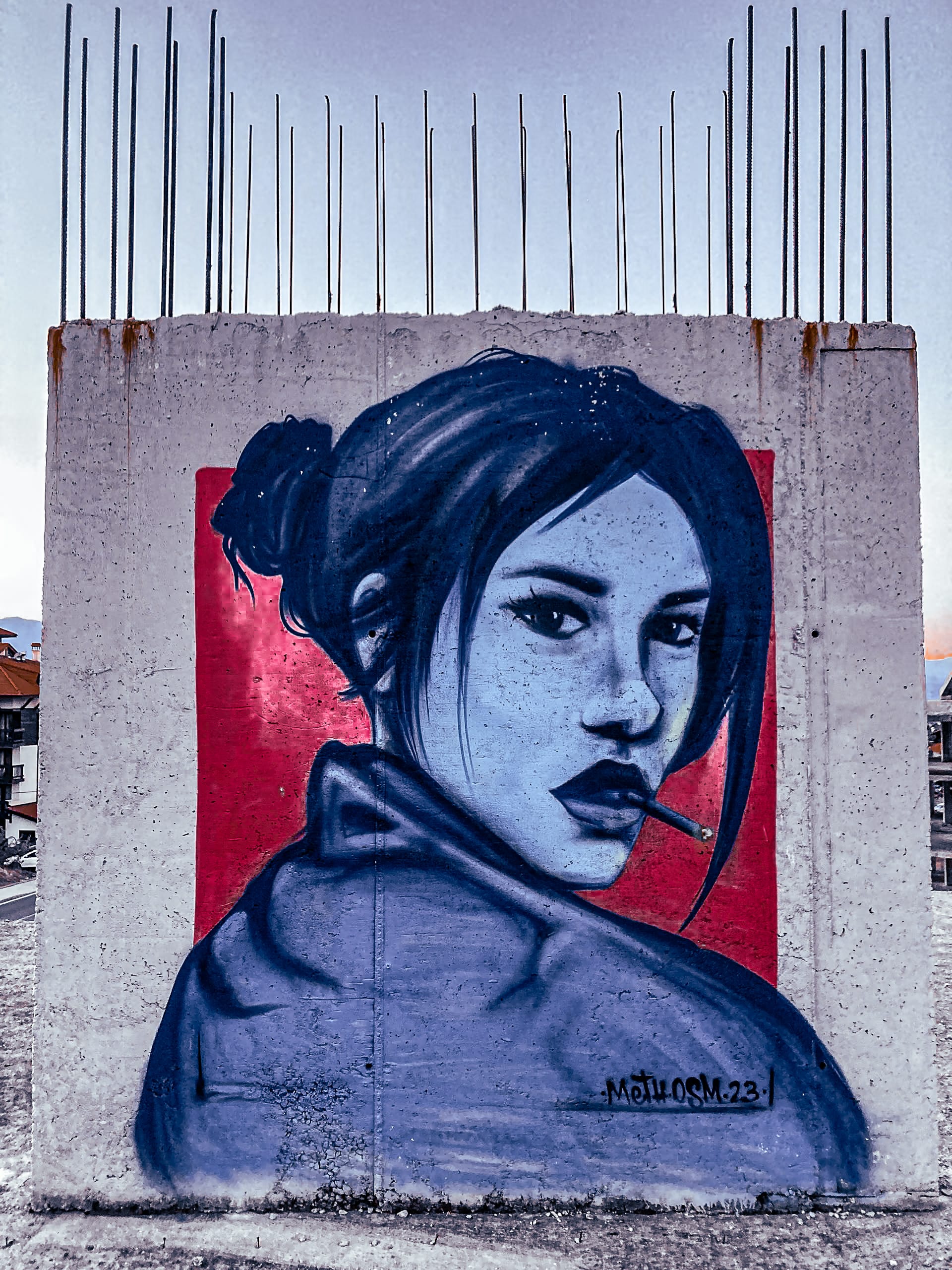
In places that felt suddenly abandoned, someone had taken the time to leave a mark, to insist that these hollow frames could be claimed for something else. The effect was striking: what might otherwise have felt only like dereliction was recast as a kind of open canvas.
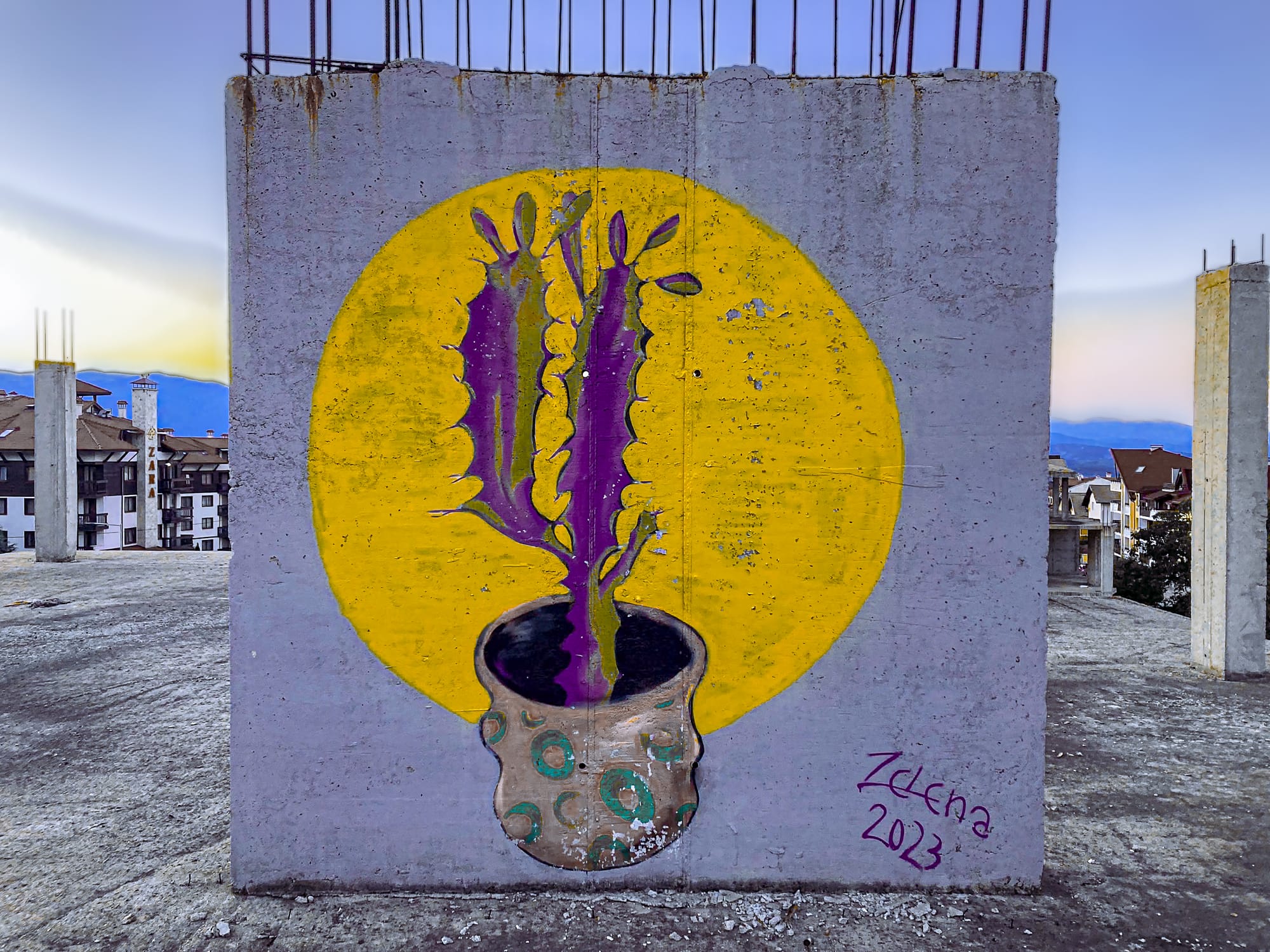
Art emerged from the emptiness, changing not only the walls but the way we moved through them. It offered a transition from absence to presence, from abandonment to expression, a reminder that even in stalled spaces, creativity finds its way.
Light and space
Walking into one of these buildings felt like stepping into the overlooked margins of modern Bansko. The concrete walls were skeletal, rough, illuminated unevenly by shafts of daylight. Window outlines, exposed beams, and chunked-away facades make the views of the distant mountains feel protected, like a painting.
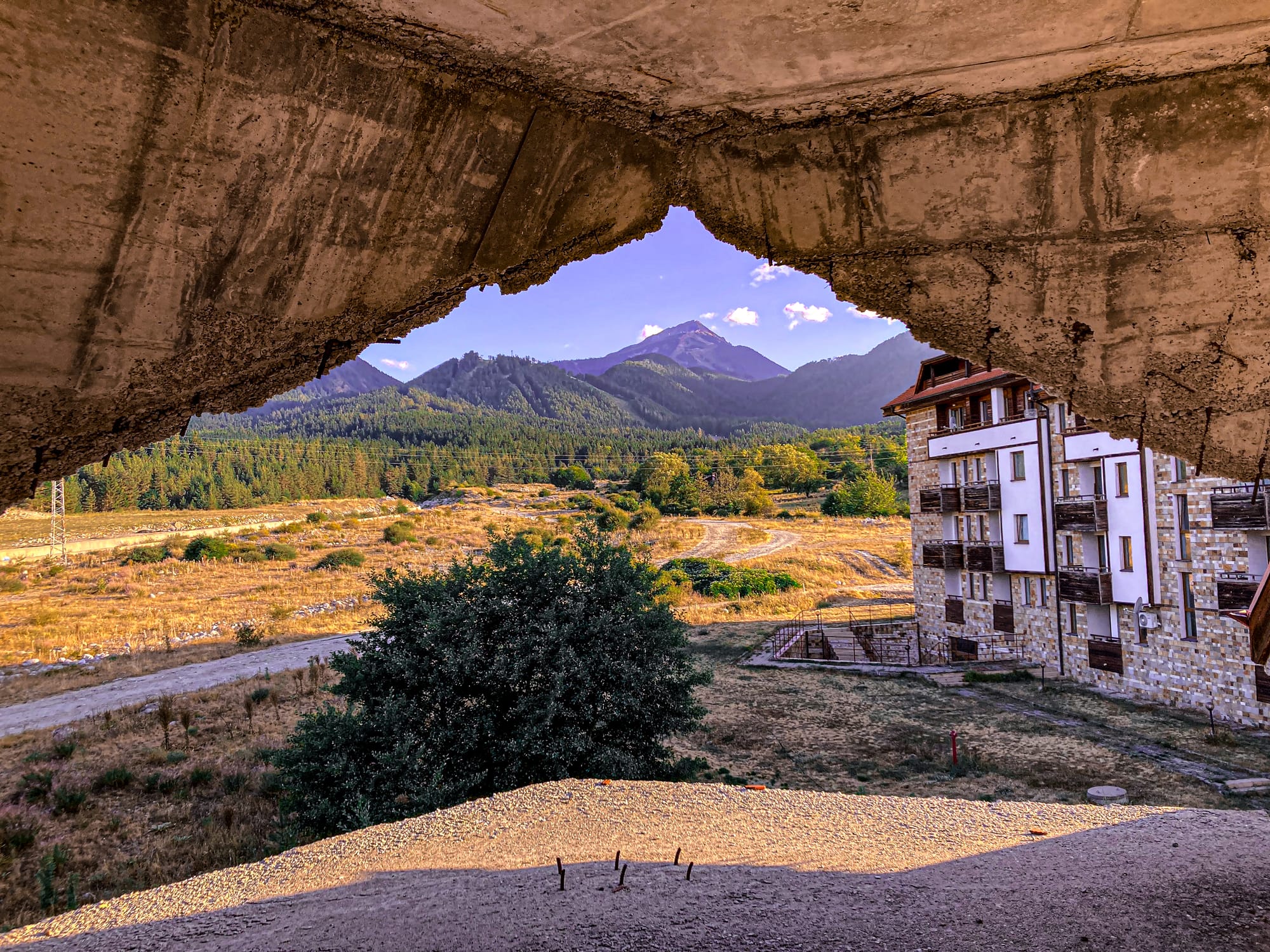
Photography here is both obvious and difficult: obvious because the geometry is there; difficult because to see it clearly, you need to slow down.
Abandonment beyond Bansko
It’s worth noting—not all abandoned places point to failure. In rural Bulgaria, abandonment has other causes too: demographic decline, aging populations, migration to cities. Entire villages have emptied. Some of this is reclaiming, not nostalgia. Scientists studying small depopulated places find that when people leave, ecosystems often return—but in fragile ways. Invasive plants can take over; biodiversity doesn’t always flourish without human care. Abandoned landscapes carry potential and risk both.
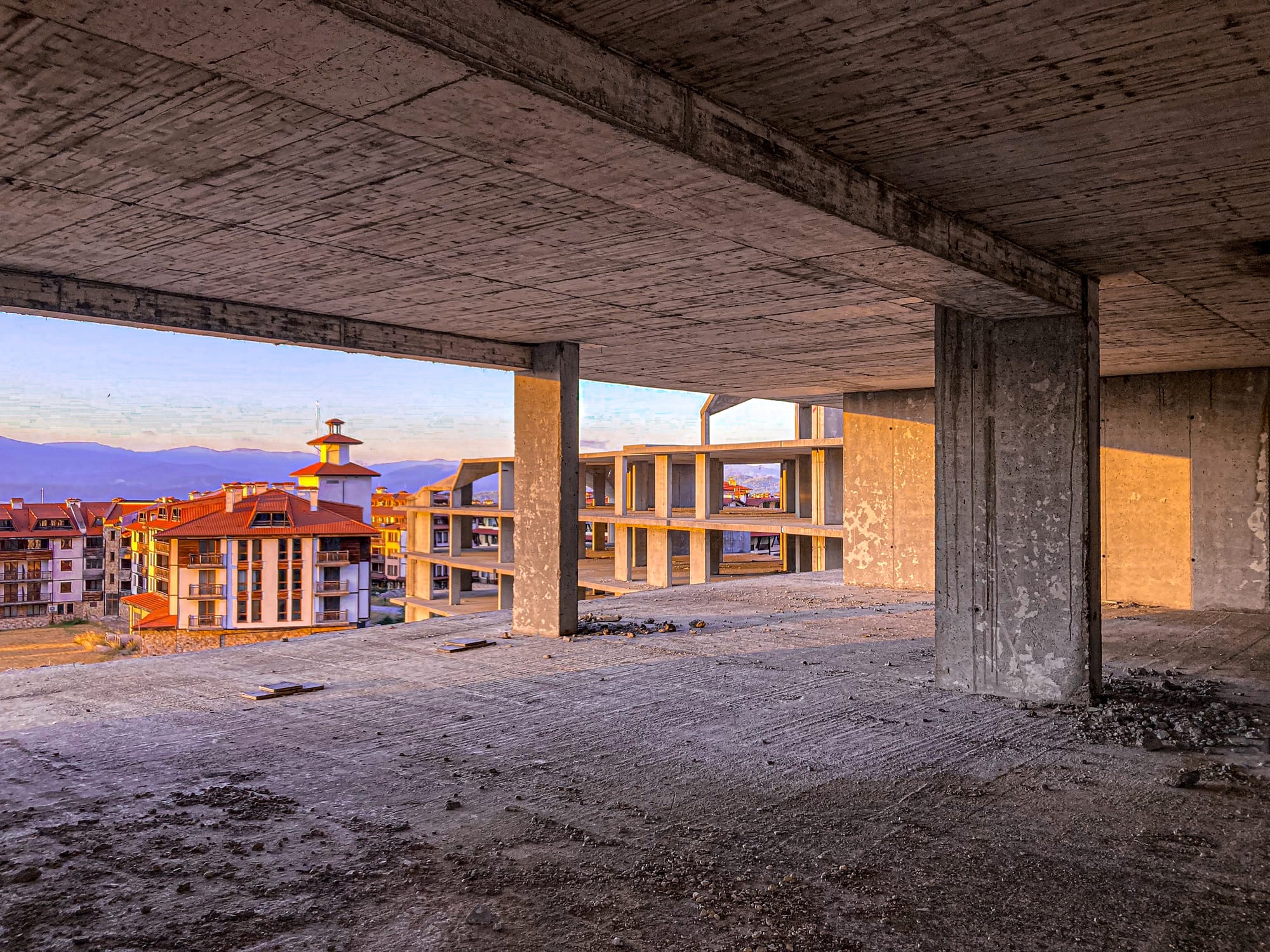
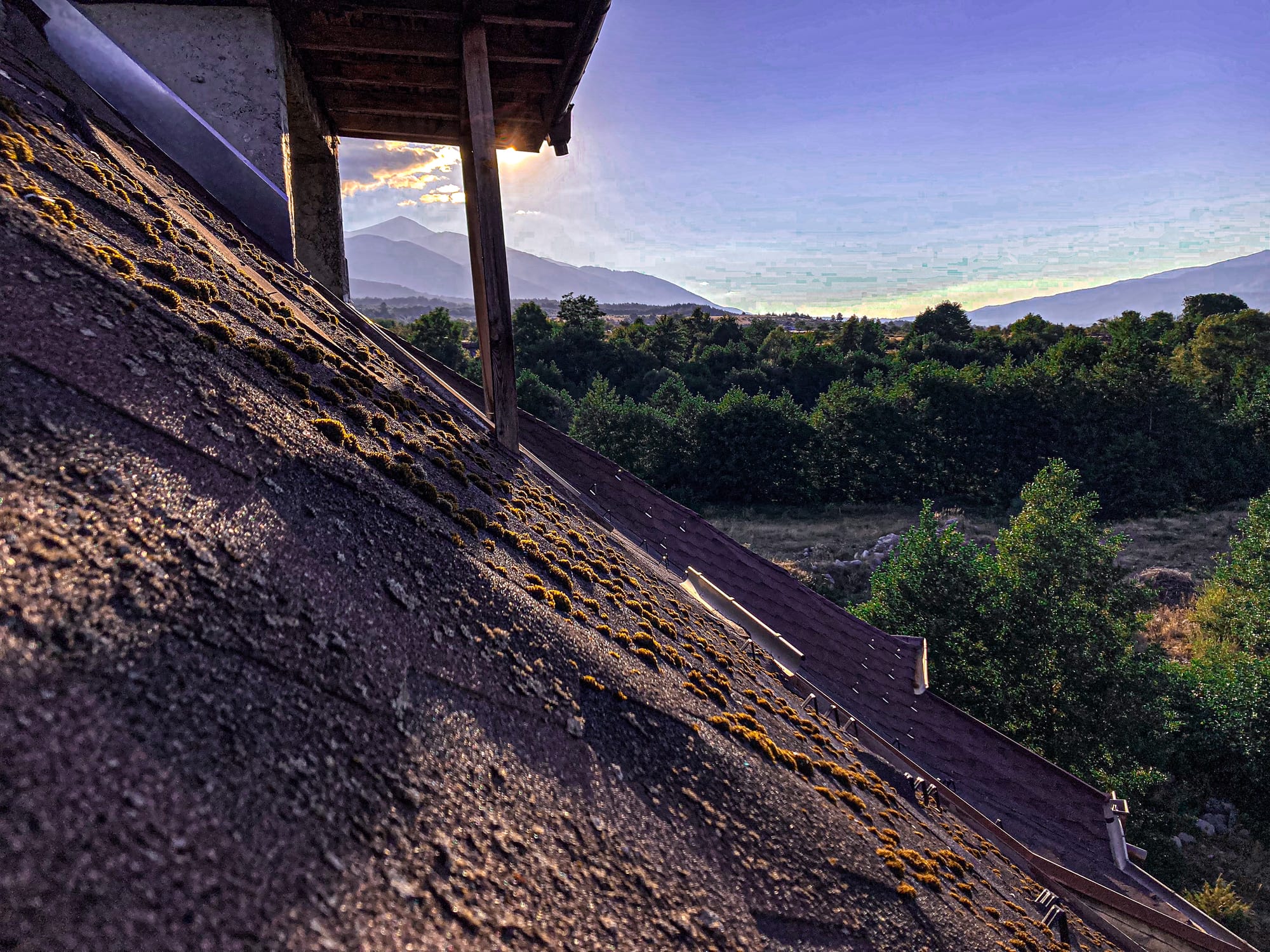
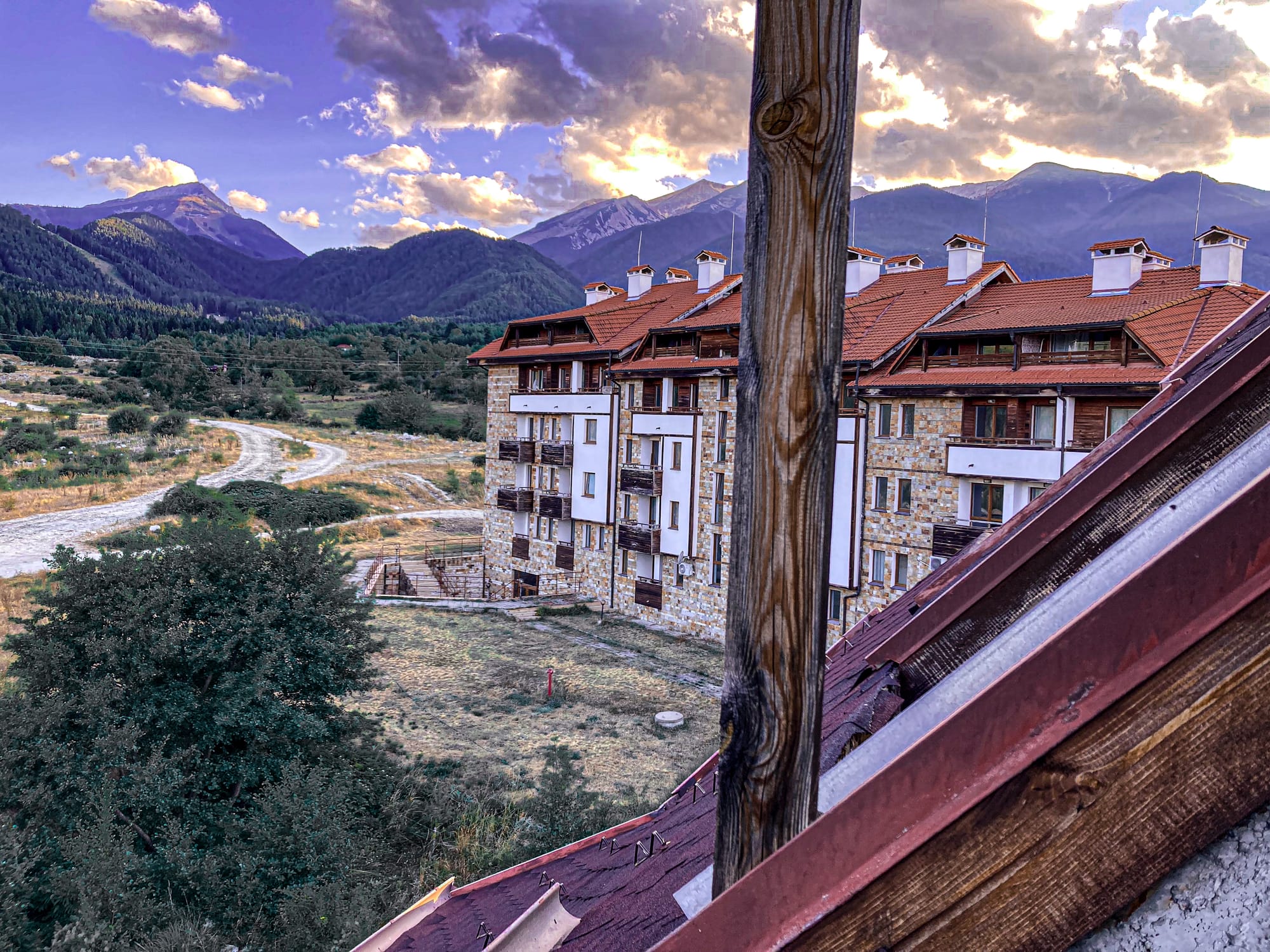
Views from the rooftops of Bansko’s abandoned buildings, with moss-covered tiles in the foreground
In Bansko’s case, these are not reclaimed villages; they’re half-buried hopes. And yet, when you climb a silent floor to watch the sunset, they take on new purpose—one shaped by seeing lost futures, reframing them through light and architecture.
Practical notes if you go exploring
These buildings often sit just outside the newer town boundary. Many are clustered together, and you don’t need directions to find them. They rise starkly, unmistakable in their unfinished state. Access varies. Some may be open and easy to walk through, while others are fenced off or carry risks from loose floors and rebar. Anyone exploring should move with care. But even from the outside, their presence is striking.
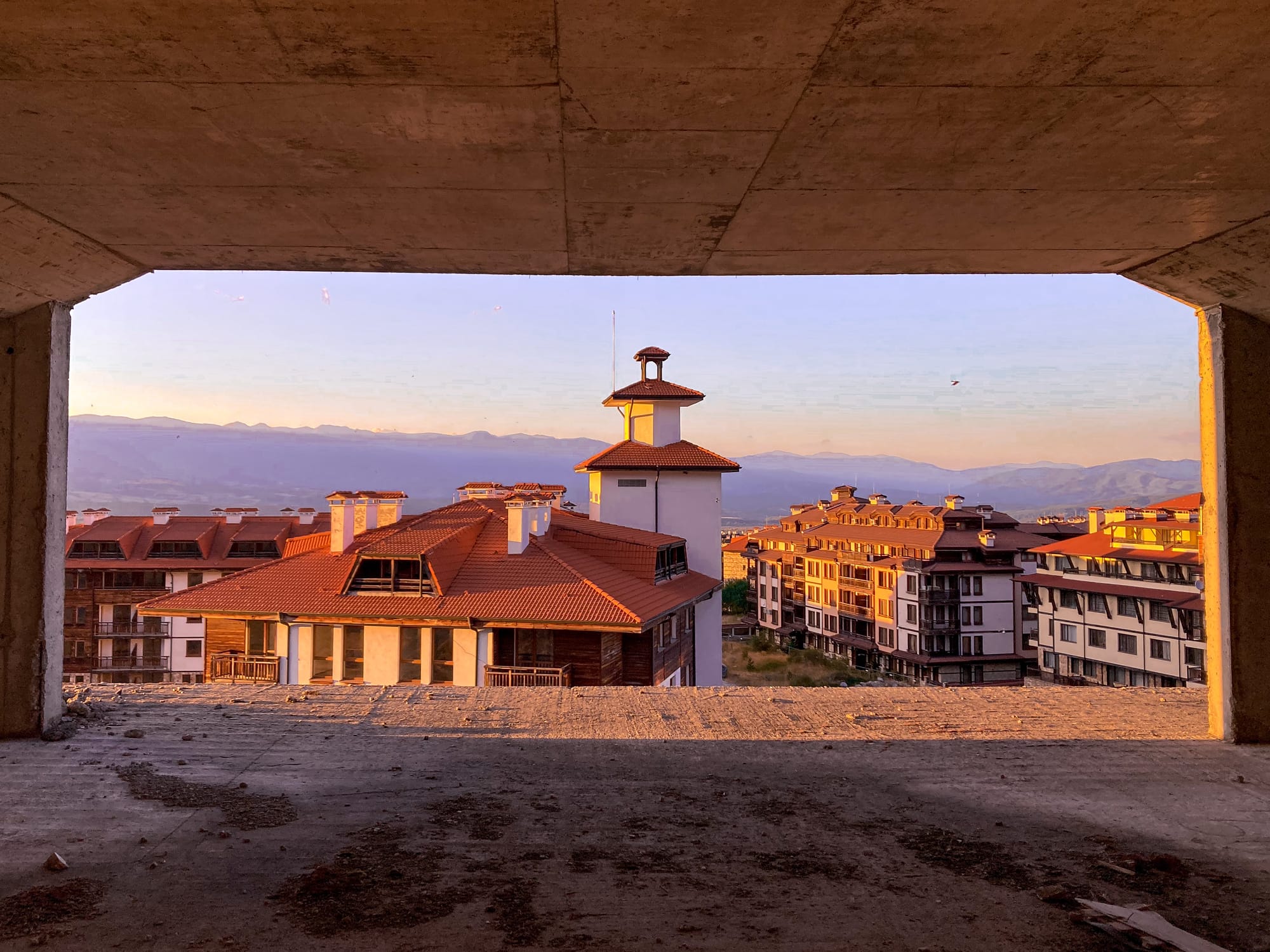
It isn’t necessary to join a formal tour. The buildings are part of everyday scenery in Bansko, and anyone walking around will come across them sooner or later. To frame a mountain through a broken window, to sit at the edge of a concrete shell and watch the town below, is an experience that requires little planning but lingers long after.
Bansko: past and present
We write not as romanticizers of decay, but because these spaces—unfinished, abandoned—shape a deeper understanding of Bansko’s present. They’re visible consequences of ambition, regulation, collapse, nature, and human intention.
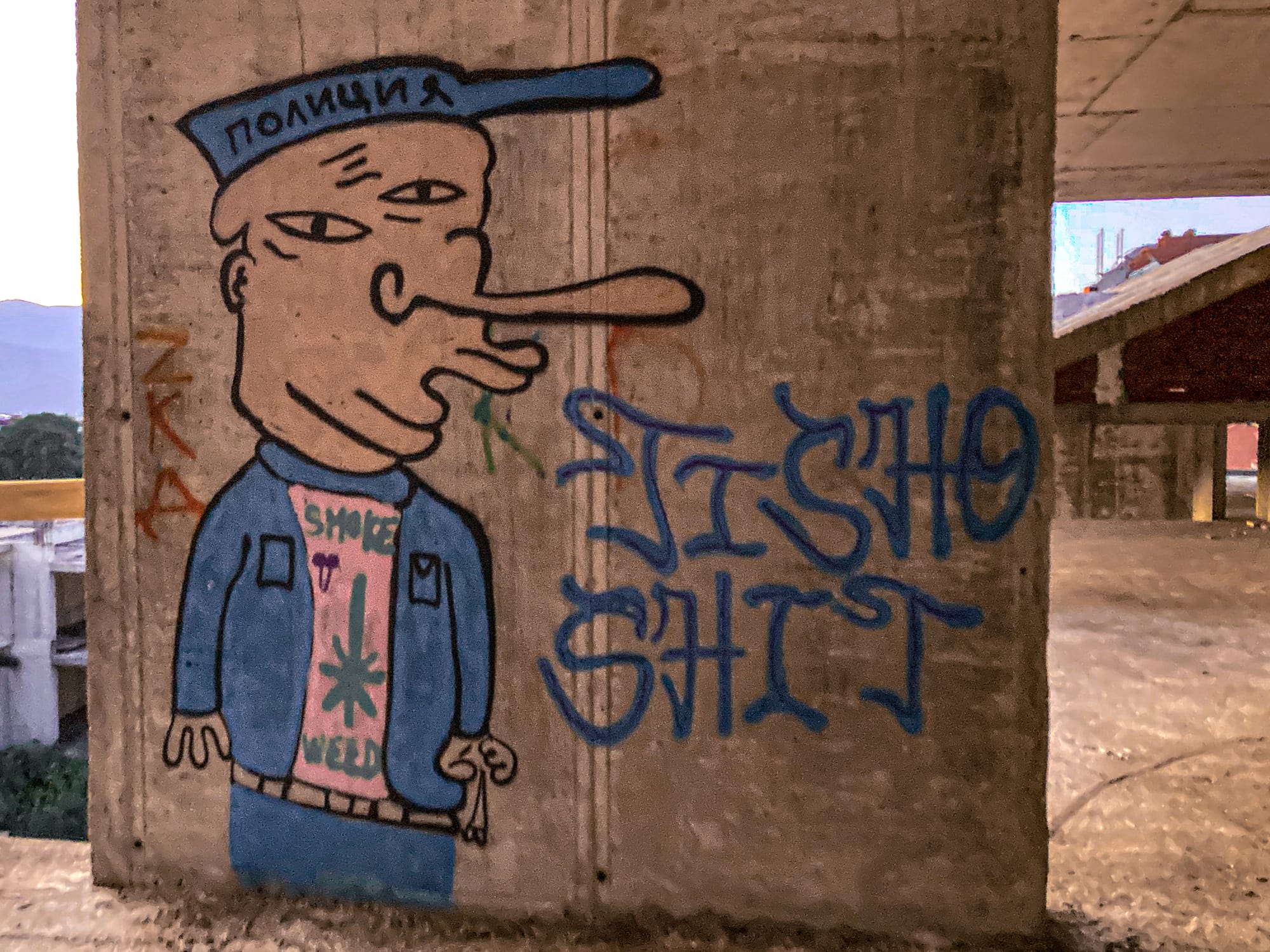
Through photography, through walking quietly up stairs that were never used, the past and present intersect. The brushstroke of graffiti on an abandoned wall, the geometry of a window framing a mountain at dusk—they re-animate what was paused.






